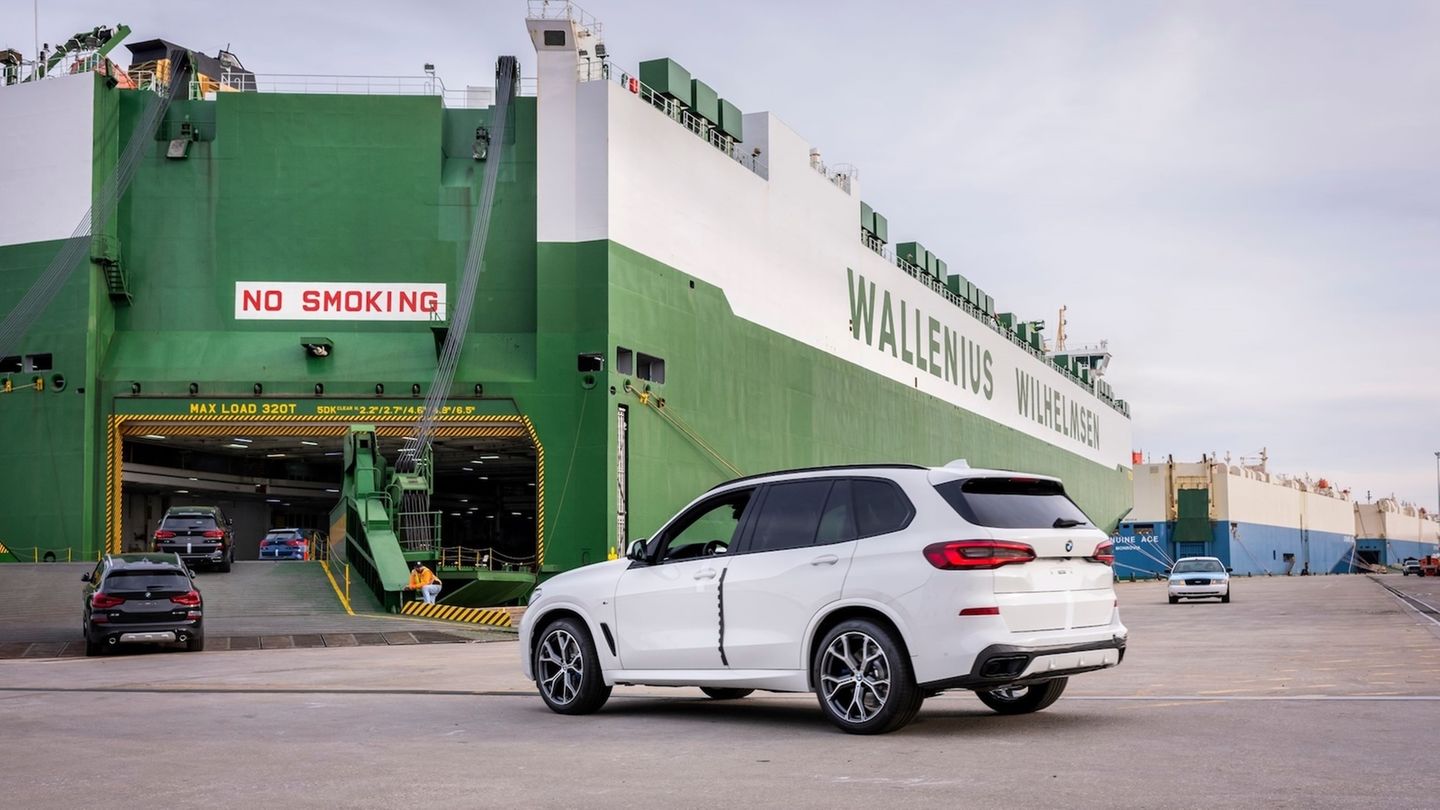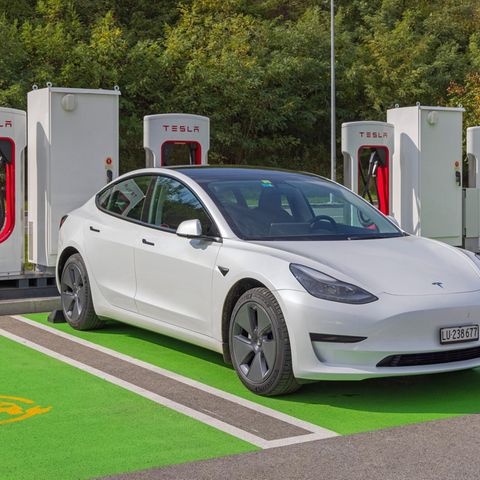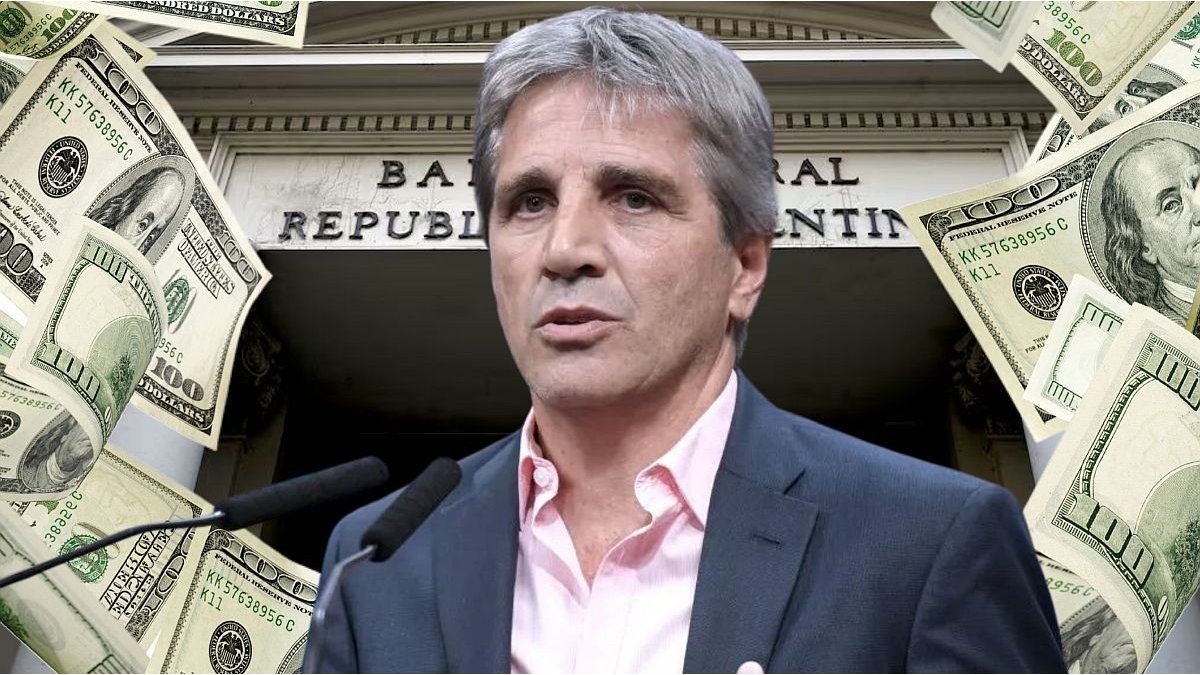Car market USA
This means the US criminal tariffs for the auto industry
Copy the current link
Add to the memorial list
US President Donald Trump is serious. Soon there will be punitive tariffs for all cars that were not produced in the United States. The battered industry brings this into trouble.
The announcement and the impending execution is not quite as surprising. Donald Trump plans to introduce further punitive tariffs in the next few days. After, among other things, steel that has not already been produced in the USA, a penalty of 25 percent is reached, cars and small commercial vehicles are now on.
After things are no longer going in China, the next bad news for the European and especially the German auto industry. Particularly affected: German premium manufacturers such as Audi, BMW, Mercedes and Porsche, because they sell a significant part – mostly between 10 and 30 percent – of their products to the USA. Audi and Porsche in particular will hit the new punitive tariff. Because while BMW in Spartanburg already has its world’s greatest production in the USA and Mercedes also operates great finishing beyond the Atlantic in Tuscaloosa and North Charleston, it looks very different with Audi or Porsche.
Audi decided years ago to build a production in Mexico and avoided the United States because discounts and wage costs in San Jose Chiapa were too tempting. In 2024, almost 150,000 Q5 vehicles were built here by 5600 workers. Porsche also has no production in the United States because the number of pieces has not yet required this.
The small crossover Porsche Macan comes from Leipzig and the Cayenne, like the other large SUV models of the Volkswagen Group (including Audi Q8, VW Touareg and Bentley Bentayga) from Bratislava. But even at BMW and Mercedes, the news of the US criminal tariffs of an impressive 25 percent hardly ensures good mood, because in Spartanburg and Tuscaloosa alone larger SUV models-especially for the North American market-are manufactured. Limousins such as the BMW 3 Series, 5, 7 Series and Mercedes C, E or S-Class are imported from Europe and are thus immediately more expensive because the car manufacturers will pass this on to customers.
VDA President: “Fatal Signal for Free Trade”
“The announced additional US tariffs of 25 percent on all cars and light commercial vehicles that are not manufactured in the United States are a fatal signal for free and rule-based trade,” says VDA President Hildegard Müller, “the tariffs that are supposed to enter into force from April. The automotive industry – with negative consequences, especially for consumers – also in North America. ” However, there is currently an imbalance at the expense of the US brands, because the European Union asserts the import of US vehicles with ten percent, while the United States only calculates 2.5 percent in import.
The US tariffs would also hit the European mass manufacturer Volkswagen. The Wolfsburgers in Chattanooga have had modern vehicle production for years. But this is far from being as successful as planned. The VW ID4 (Elektro) and the US models Atlas and Atlas Cross Sport are manufactured here by around 5000. Models such as Tiguan, Taos, Jetta, Golf or ID Buzz come from Europe or Central and South America to the USA and are therefore also under the new tax.
BMW has even been the largest auto exporter in the USA from its production in Spartanburg for years; Greater than home players like Tesla, General Motors, Ford, Jeep or Chrysler. According to data from the US Ministry of Trade, BMW exported around 225,000 vehicles worth more than $ ten billion last year alone-more than any other. “The work in Spartanburg has been an important and today the largest location in our production network,” explains BMW production board member Milan Nedeljković, “the strong export share of our work is underlining the importance of free trade for the USA. This not only benefits our work, but also the strong supplier network in the region.” Since 2014, exports of 2.7 million vehicles with a total volume of $ 104 billion have existed. 70 percent of the steel and aluminum quantities built there come from the USA and therefore have nothing to do with punitive tariffs.
German automotive industry employs almost 140,000 people in the United States
The German automotive industry currently employs almost 140,000 people in the United States, around 48,000 directly with the automotive manufacturers and another 90,000 with German suppliers. The United States is an important part of the production network of the German automotive industry, because from here not only the USA, but also important markets in Europe or Asia are particularly supplied with the popular crosoves. Last year, German manufacturers in the United States produced over 844,000 vehicles in the United States, of which around half have been exported all over the world. But not only the German car brands put pressure on the new regulation. The Asian brands such as Toyota, Lexus, Hyundai, Kia, Mazda or Volvo, not all of their models for the US market also manufacture in the United States.
In 2024, cars worth 6.7 billion euros were exported from the USA to Germany – 136,000 cars. This means that cars “Made in USA” are in the value behind the Czech Republic and Spain in third place in German import statistics. Last year, the United States exported 233,600 cars with a total value of over 10 billion euros-compared to the overall production of the country, because US vehicles have not been particularly popular in Europe for years. The volume manufacturer Tesla, on the other hand, hardly has to import its vehicles, since most vehicles are also manufactured in Europe – especially in the Grünheide plant near Berlin. For other US brands such as Ford, Cadillac or Chevrolet, your own production is not worth it due to the low volumes.
Press Inform
ch
Source: Stern
I’m a recent graduate of the University of Missouri with a degree in journalism. I started working as a news reporter for 24 Hours World about two years ago, and I’ve been writing articles ever since. My main focus is automotive news, but I’ve also written about politics, lifestyle, and entertainment.






